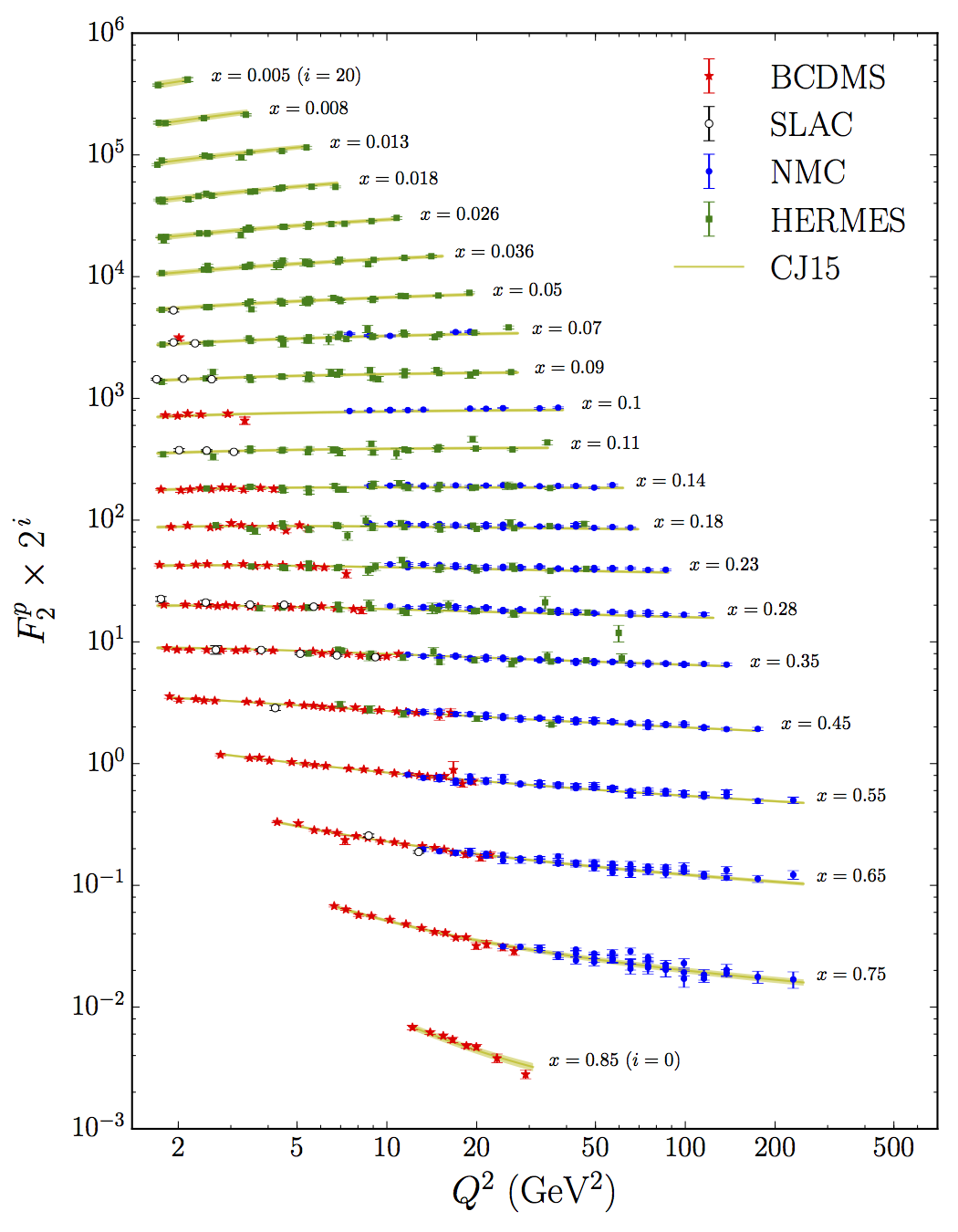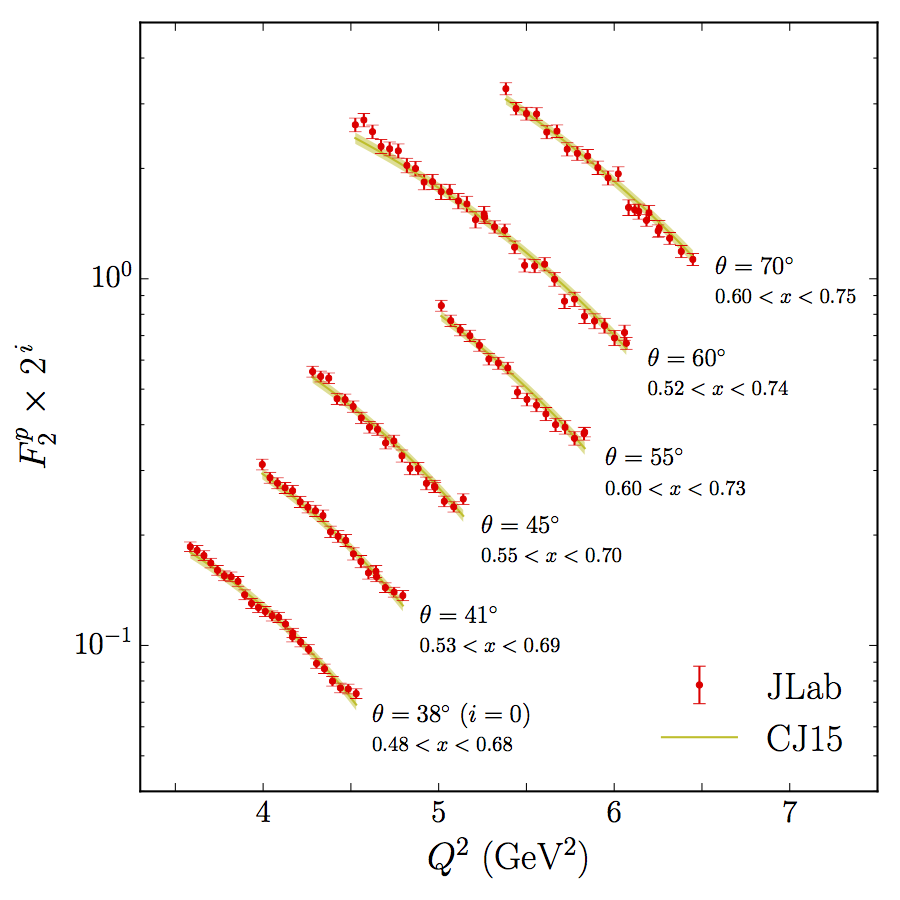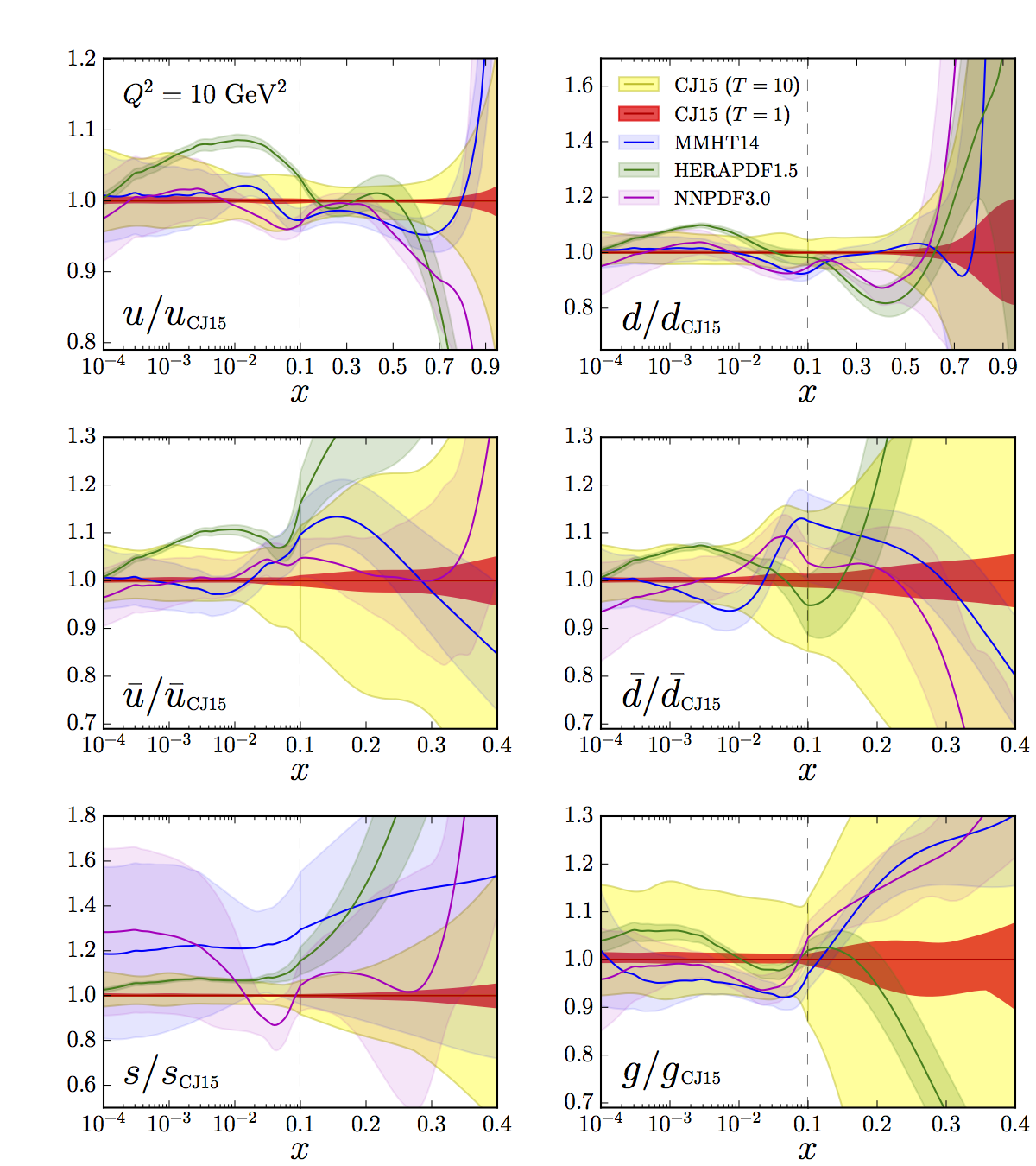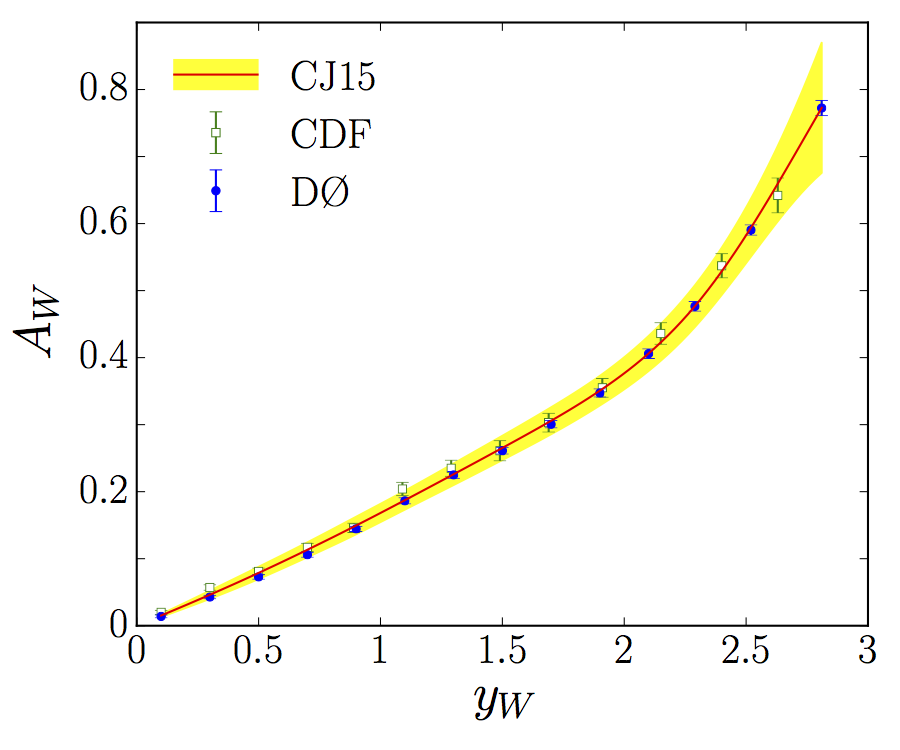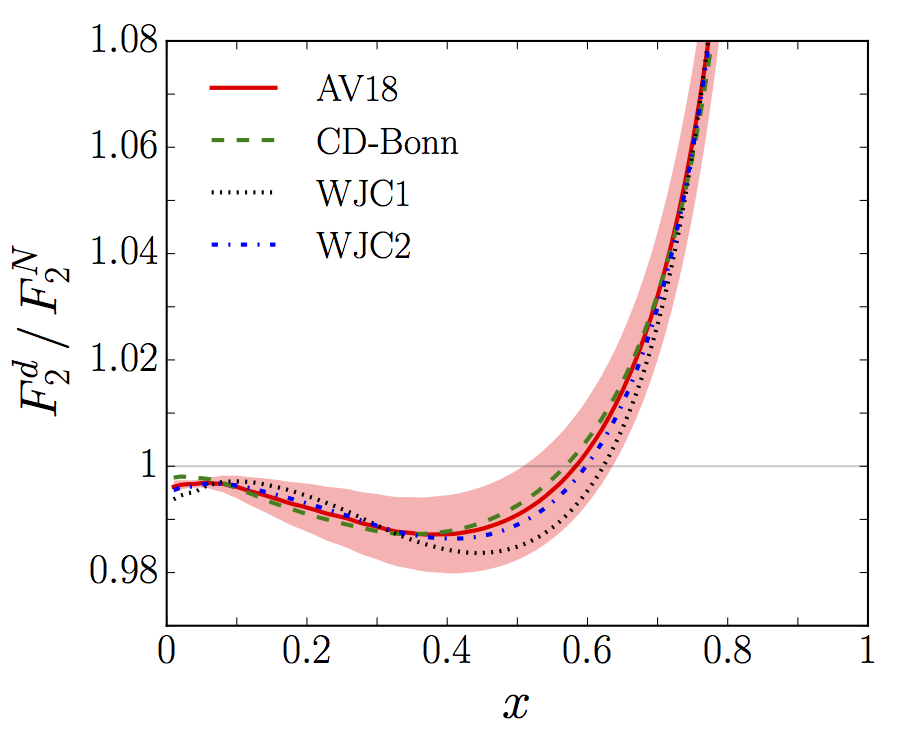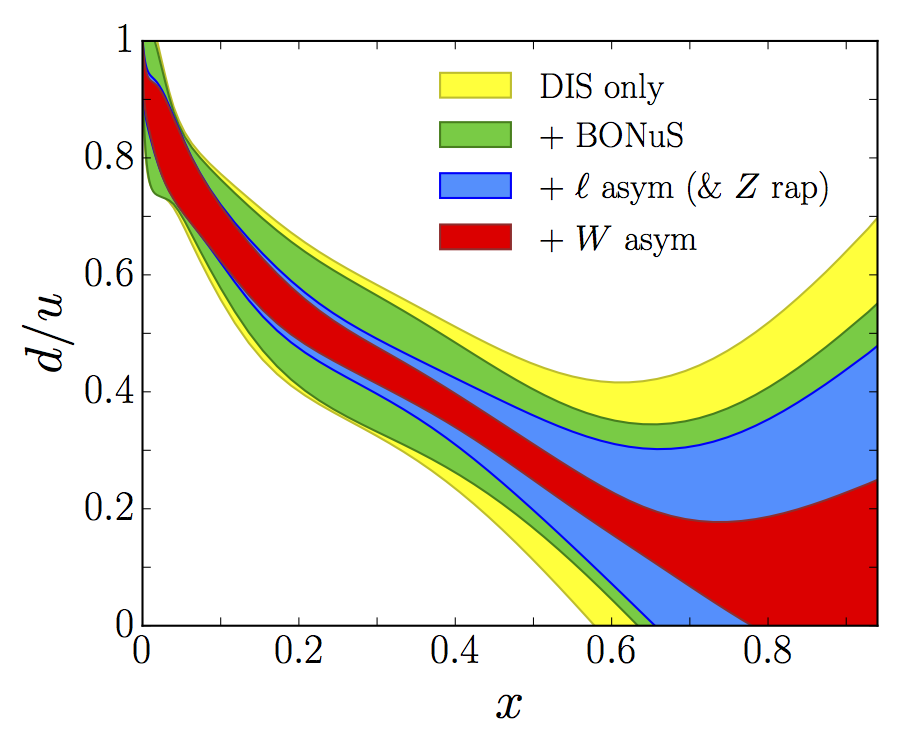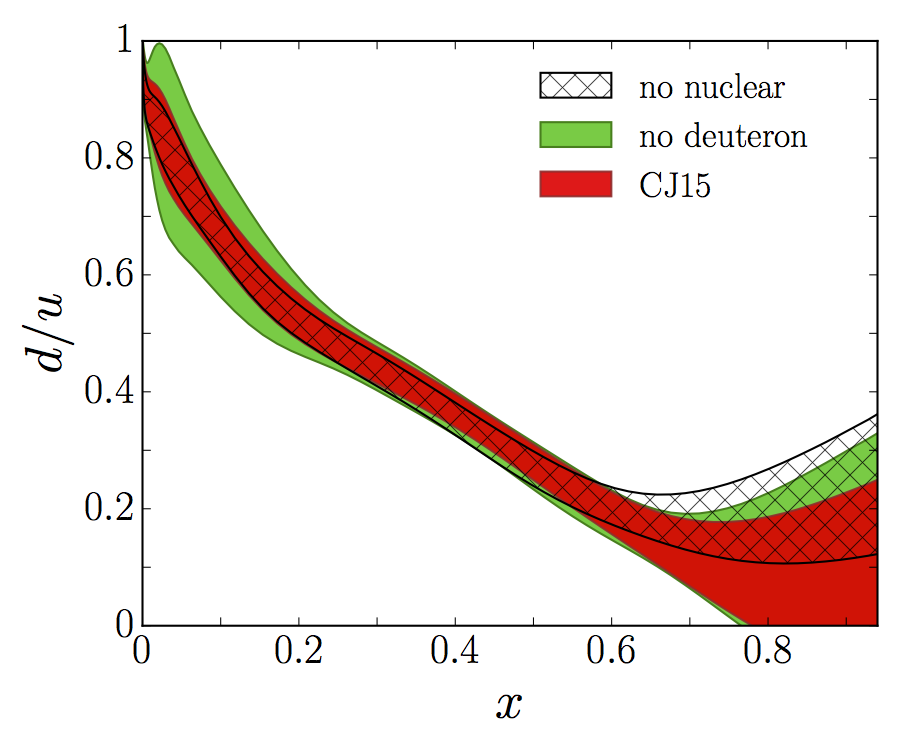About CJ
The CJ (CTEQ-Jefferson Lab) Collaboration studies the quark and gluon structure of the nucleon by performing global QCD fits of parton distribution functions (PDFs). These parametrize a vast array of data including deep-inelastic lepton-nucleon scattering, proton-proton collisions (lepton pair creation, W-boson and jet production), and other reactions, with particular focus on the large-x region.
The latest CJ15 fits use less restrictive cuts on Q (> 1.3 GeV) and W (> 1.73 GeV), which greatly increases the amount of data accessible at large x and reduces the statistical uncertainty in large-x PDFs. An illustration of the quality of the fit to data is shown in Fig. 1 for the proton F2 structure function, over a large range of x and Q.
The resulting PDFs for the u, d, anti-u, anti-d, s quarks and gluon g are illustrated in Fig. 2 compared with PDFs from other analyses.
The new data on the W-boson asymmetry in particular, shown in Fig. 3 (left), significantly improve the constraints on the d/u quark PDF ratio. This in turns allows a more reliable determination of the deuteron to nucleon F2 ratio, Fig. 2 (right).
The effects on the d/u ratio are illustrated in Fig. 4, arising from inclusion of specific data sets, and from removing nuclear corrections and deuterium data.
Fig. 1. Proton F2 structure function data from various experiments (left) at BCDMS, SLAC, NMC, HERMES at fixed x, and (right) at Jefferson Lab for fixed angle, compared with the CJ15 fit (for a tolerance T=10), scaled by a factor 2i.
Fig. 2. Ratio of PDFs to the CJ15 central values for various PDF sets: CJ15 for tolerance T=1 and 10, MMHT14, HERAPDF1.5 and NNPDF3.0, for the u, d, anti-u, anti-d, s and g PDFs.
Fig. 3. (Left) W-boson charge asymmetry from as a function of the W-boson rapidity for CDF and D0 data, compared with the CJ15 fit with T = 10. (Right) Ratio of deuteron to free nucleon structure functions F2d/F2N for CJ15, for different deuteron wave functions.
Fig. 4. (Left) Impact of various data sets on the d/u ratio (for T=10). (Right) Impact on d/u ratio of removing nuclear corrections and omitting deuterium data.


